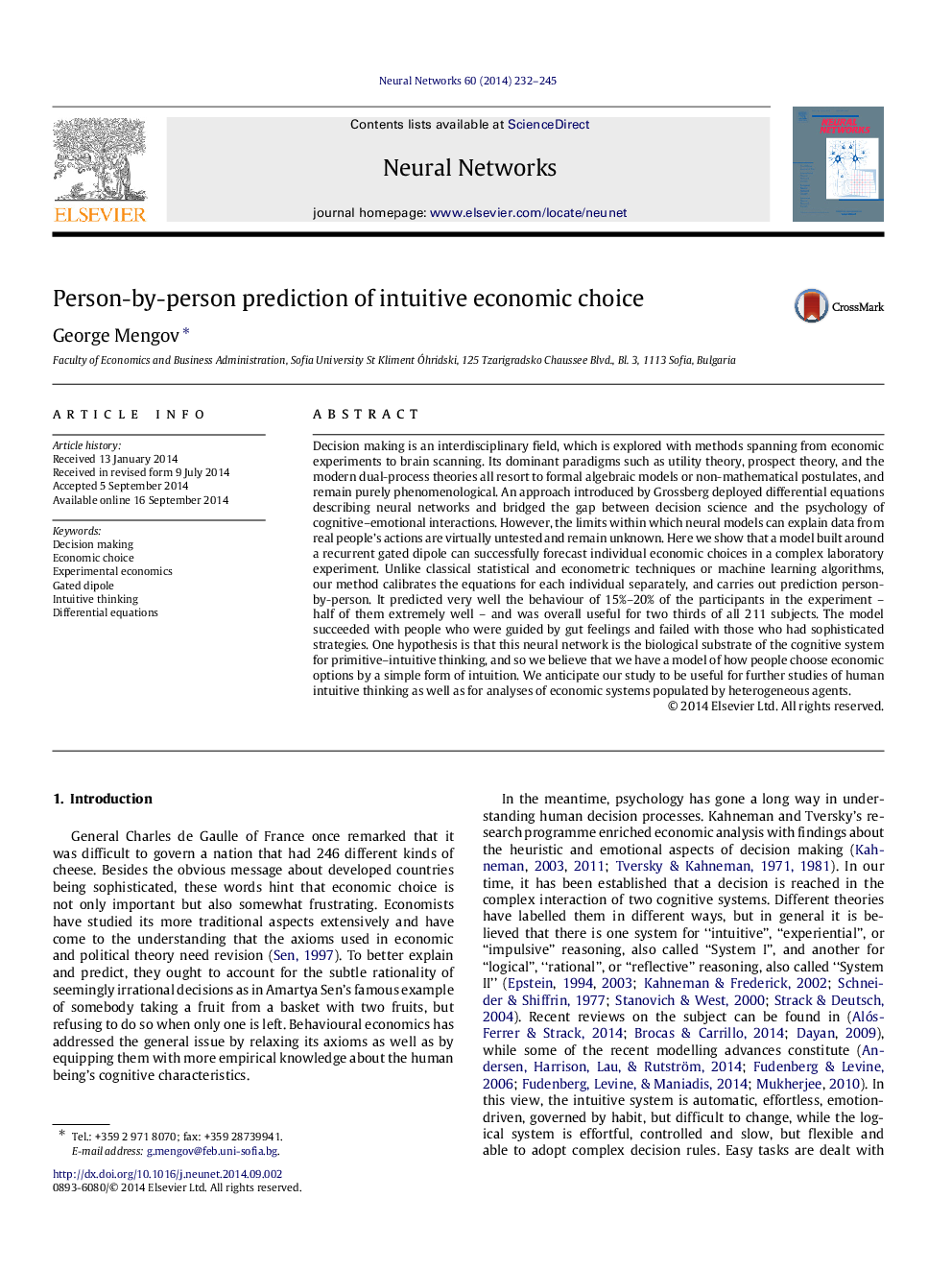| Article ID | Journal | Published Year | Pages | File Type |
|---|---|---|---|---|
| 406174 | Neural Networks | 2014 | 14 Pages |
Decision making is an interdisciplinary field, which is explored with methods spanning from economic experiments to brain scanning. Its dominant paradigms such as utility theory, prospect theory, and the modern dual-process theories all resort to formal algebraic models or non-mathematical postulates, and remain purely phenomenological. An approach introduced by Grossberg deployed differential equations describing neural networks and bridged the gap between decision science and the psychology of cognitive–emotional interactions. However, the limits within which neural models can explain data from real people’s actions are virtually untested and remain unknown. Here we show that a model built around a recurrent gated dipole can successfully forecast individual economic choices in a complex laboratory experiment. Unlike classical statistical and econometric techniques or machine learning algorithms, our method calibrates the equations for each individual separately, and carries out prediction person-by-person. It predicted very well the behaviour of 15%–20% of the participants in the experiment–half of them extremely well–and was overall useful for two thirds of all 211 subjects. The model succeeded with people who were guided by gut feelings and failed with those who had sophisticated strategies. One hypothesis is that this neural network is the biological substrate of the cognitive system for primitive–intuitive thinking, and so we believe that we have a model of how people choose economic options by a simple form of intuition. We anticipate our study to be useful for further studies of human intuitive thinking as well as for analyses of economic systems populated by heterogeneous agents.
